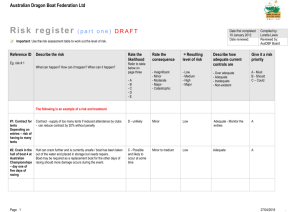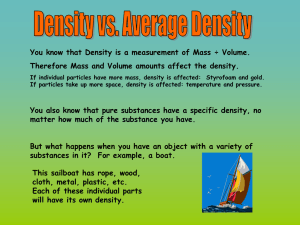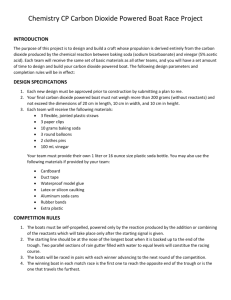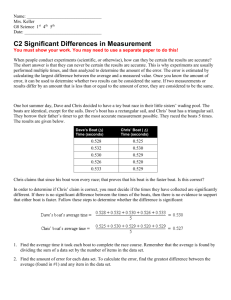Center of Mass and Center of Gravity
advertisement
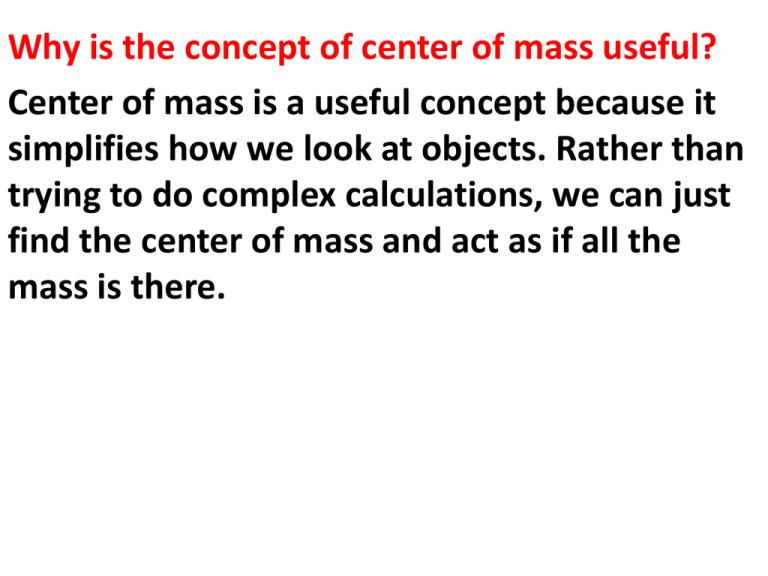
Why is the concept of center of mass useful? Center of mass is a useful concept because it simplifies how we look at objects. Rather than trying to do complex calculations, we can just find the center of mass and act as if all the mass is there. Center of Mass and Center of Gravity Center of Mass: The center of mass of an object is the average point of the mass of the object. Center of Gravity: The point on an object where all of its weight can be considered to act. These are the same points for an object in a constant gravitational field. The center of mass lies at the geometric center for a symmetric, uniform density object. R h h h h/2 h/3 h/2 Center of Mass M M L/2 L/2 L 3M Center of Mass 1/4L 3/4L L M Calculating the Center of Mass Two particles of mass m1 and m2 that are located on the x axis at the position x1 and x2. The distance xcm of the center of mass point from the origin is: Sample: A 1.0 m long dumbbell has a 10 kg mass on the left and a 5.0 kg mass on the right. Find the center of mass (the position of the center of gravity). m1 = 10kg x1 = 0 m m2 = 5.0kg xcm x2 = 1.0m Fin the center of mass of an object modeled as two separate masses on the x-axis. The first mass is 2 kg at an x-coordinate of 2 and the second mass is 6 kg at an x- coordinate of 8. We can use the same strategy for finding the center of mass of a multi-dimensional object. Sample Problem: Find the coordinates of the center of mass for the system shown below. Answer: Center of mass The center of mass of a system will not move if there is no external forces acting on the system. EXAMPLE A fisherman stands at the back of a perfectly symmetrical boat of length L. The boat is at rest in the middle of a perfectly still and peaceful lake, and 1 the fisherman has a mass /4 that of the boat. If the fisherman walks to the front of the boat, by how much is the boat displaced? Because the boat is symmetrical, we know that the center of mass of the boat is at its geometrical center, at x = L/2. Bearing this in mind, we can calculate the center of mass of the system containing the fisherman and the boat: In the figure below, the center of mass of the boat is marked by a dot, while the center of mass of the fisherman-boat system is marked by an x. At the front end of the boat, the fisherman is now at position L, so the center of mass of the fishermanboat system relative to the boat is The center of mass of the system is now 3 /5 from the back of the boat. But we know the center of mass hasn’t moved, which means the boat has moved backward a distance of 1/5 L, so that the point 3/ 5 L is now located where the point 2 /5 L was before the fisherman began to move. Walking along the slab A child of mass m is standing at the left end of a thin and uniform slab of wood of length L and mass M. The slab lies on a horizontal and frictionless icy surface of a lake. Starting from rest, the child walks towards the right end of the slab. a) How far and in what direction did the center of mass of the child-slab system move when the child has reached the right end of the slab? b) Where is the left end of the slab with respect to its initial position when the child has reached the right end?
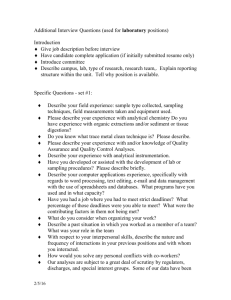
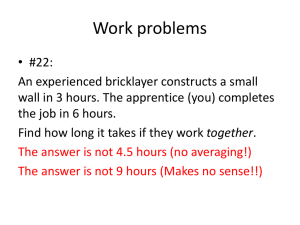


![[NI4331] Spaid Genealogy by A](http://s3.studylib.net/store/data/006715111_1-66565dd855c7f07f66414a20c8e82379-300x300.png)


